Ray's Chevy Restoration Site
No Drilling Required -- DIY QuadraJet Throttle Shaft Bushings
Loose throttle shafts due to worn baseplate shaft bores are a common problem on high mileage QuadraJet carburetors. This results in vacuum leaks and throttle plate mis-alignment.
This page describes an easy do-it-yourself repair procedure I learned from Dave Ray (IgnitionMan / HEI451) on an auto repair message board. The repair uses home-made Teflon "bushings" and, unlike metal bushings, does not involve any risky drilling or modifying of the baseplate.
Photo #1 shows the throttle not completely closing against the idle speed adjustment screw as a result of throttle plate mis-alignment allowing the plates to hit the sides of the throttle bores.
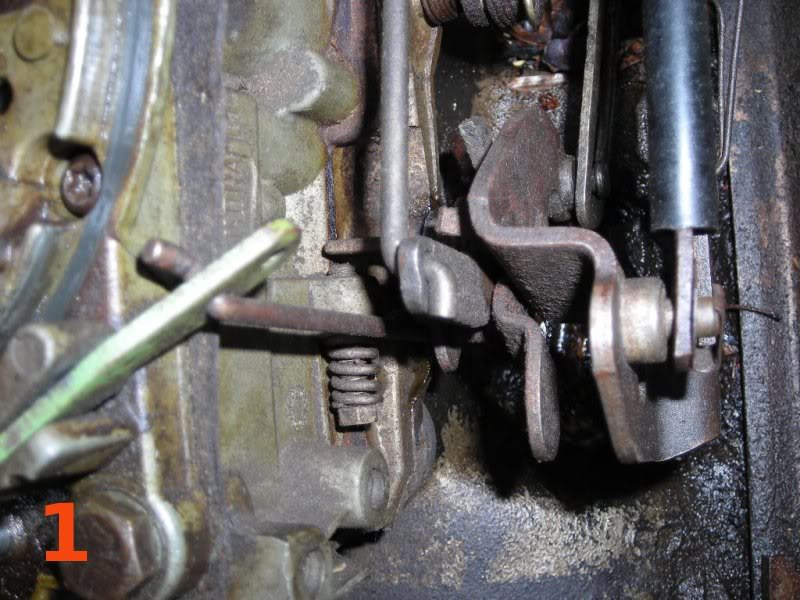
Important: Throttle shaft mis-alignment is not the only thing
that will prevent the throttle from returning to the normal idle position. Be
sure to first check the linkage/cable for binding and make sure the choke and
fast idle mechanism are functioning properly.
Photo #2 is a reference photo showing the fast idle cam mechanism (stamped with a "Y" on this particular carb). Note that the choke (converted to manual on this carb) is open and the fast idle cam is down in the "regular idle" position.
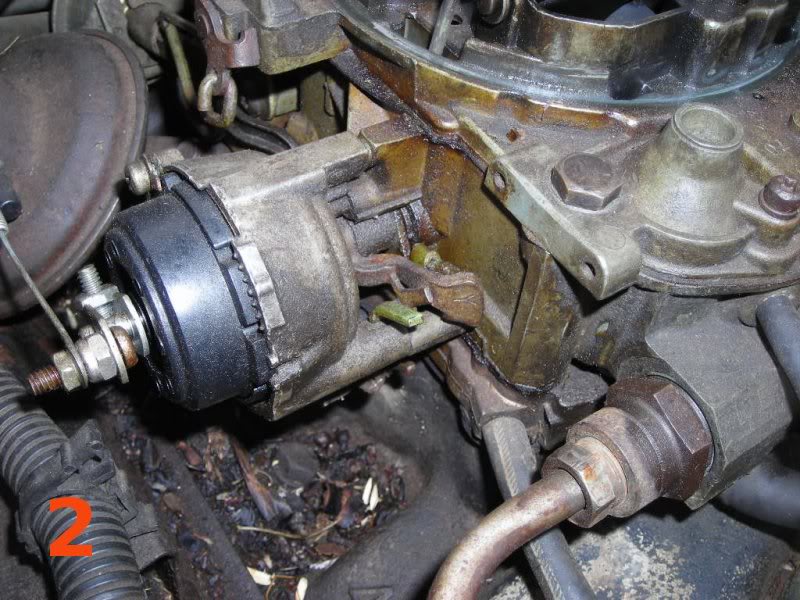
Photo #3 shows the baseplate removed from the carb. Also shown in this photo are the parts (teflon sheet and screws) necessary for the repair. I couldn't find these parts locally so I purchased them from SmallParts.com. The 6"x6"x.015" thick Teflon sheet is part# STE-0015-A and is plenty to repair several carburetors. The 3-48 x 1/4" Button head screws are part# BCAS-0348-04-25 for a pack of 25 that's enough to do 6 primary shafts (or 3 complete carbs).
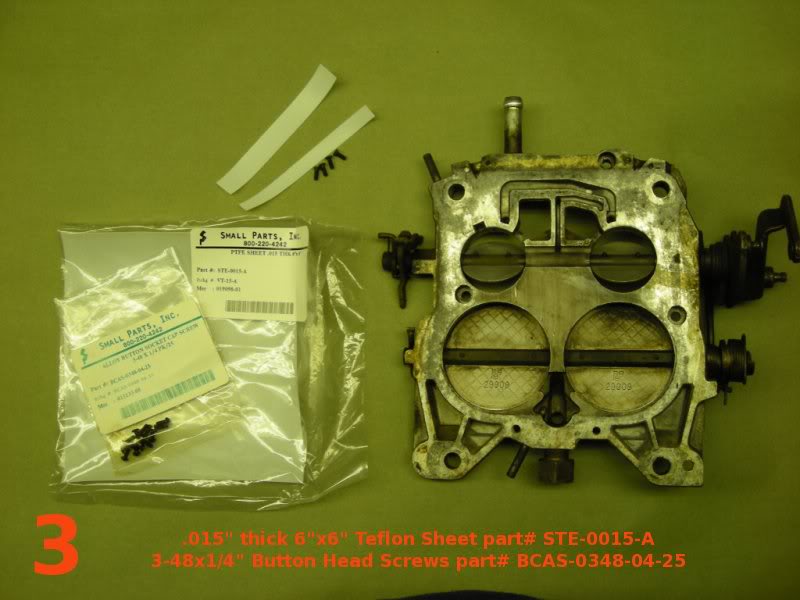
Photo #4 shows a quick "before" measurement of the throttle shaft looseness. With about .020" of play, the shaft felt noticibly loose when wiggling the throttle lever.
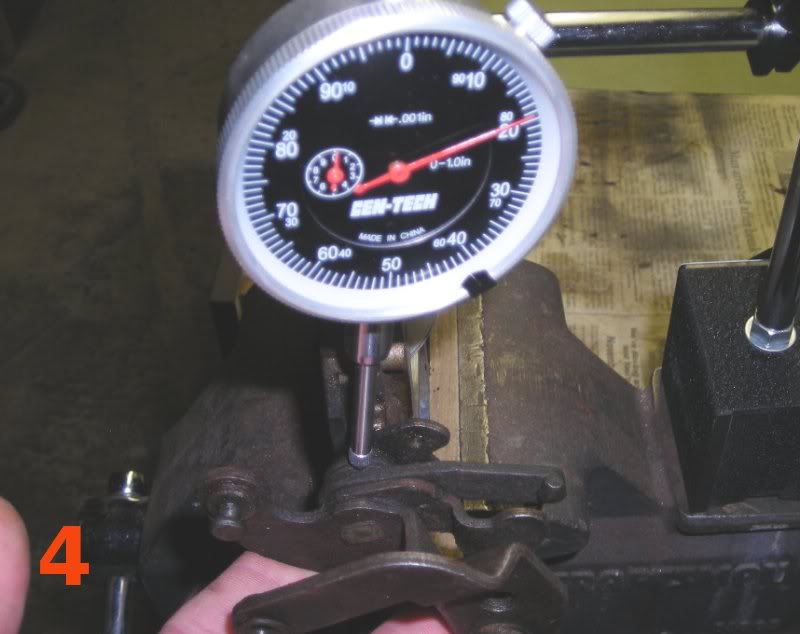
Photo #5 shows a Dremel tool being used to carefully grind off the staked ends of the throttle plate screws. Attempting to remove the screws without doing this will usually result in the heads twisting off. Or the threads in the shaft being damaged by the staked ends of the screws being backed through them.
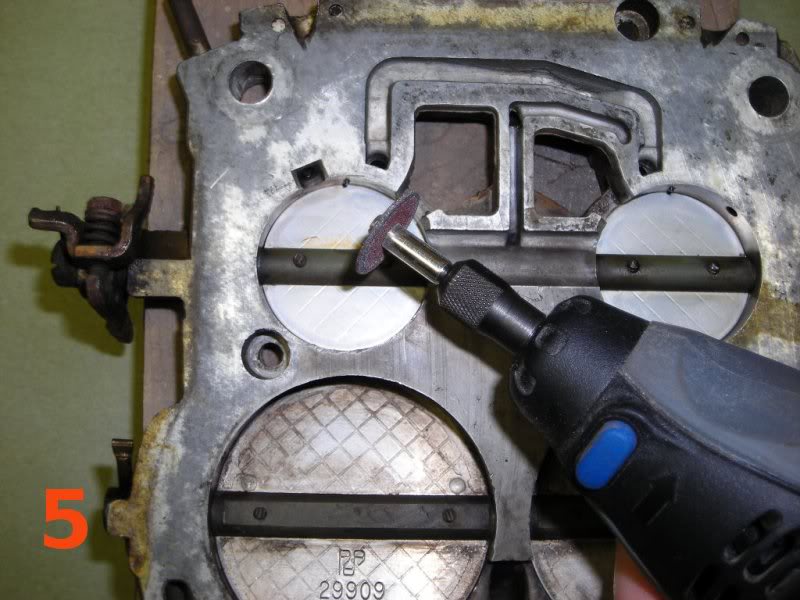
With the staked ends ground off, simply unscrew the screws to remove the throttle plates. Take note of their position for re-assembly time. It will also be necessary to remove the linkage connecting the primary and secondary throttle shafts as well as the fast idle tang on the end of the primary shaft. Check with a repair manual if you need more info on removing these pieces. With all that out of the way, the primary throttle shaft (with lever attached) will slide right out of the baseplate.
Photo #6 shows the "stepped bore" that's present on all QuadraJet baseplates from the factory. This is what allows the teflon "bushings" to be installed without any drilling. The shaft only rides on the inner (smaller) part, leaving the outer (larger) part unworn in all but the most extreme cases.
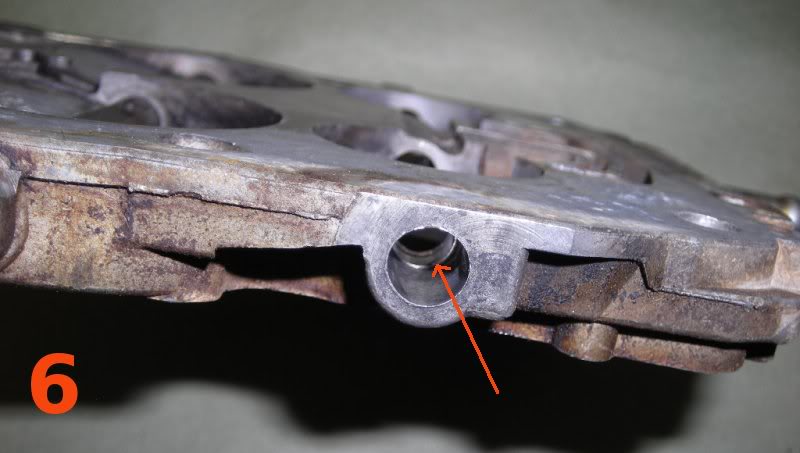
Photo #7 shows the shaft laying on the baseplate. The orange arrows are pointing out the worn areas of the shaft that were riding on the smaller stepped down parts of the bore. The white arrows are pointing out the unworn areas of the shaft that were in the larger stepped up parts of the bore (this is where the home-made "bushings" will go).
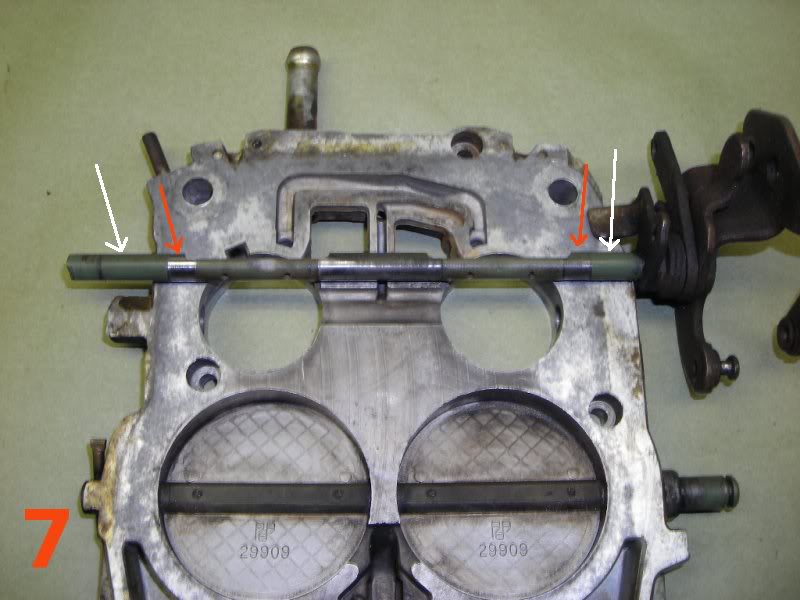
Photo #8 shows one of the home-made "bushings" partially installed in the baseplate. Another "bushing" is temporarily placed in position on the throttle shaft for reference. These "bushings" are made by simply cutting the .015" thick teflon sheet into approx 3/8" by 1" rectangles and rolling them into a loop.
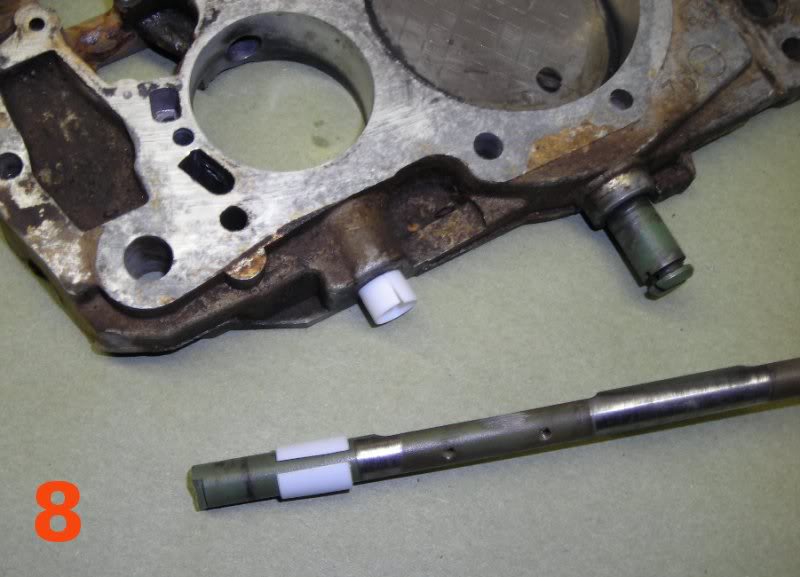
Photo #9 shows the driver side bushing being installed. With the bushing partially inserted into the baseplate, carefully slide in the throttle shaft.
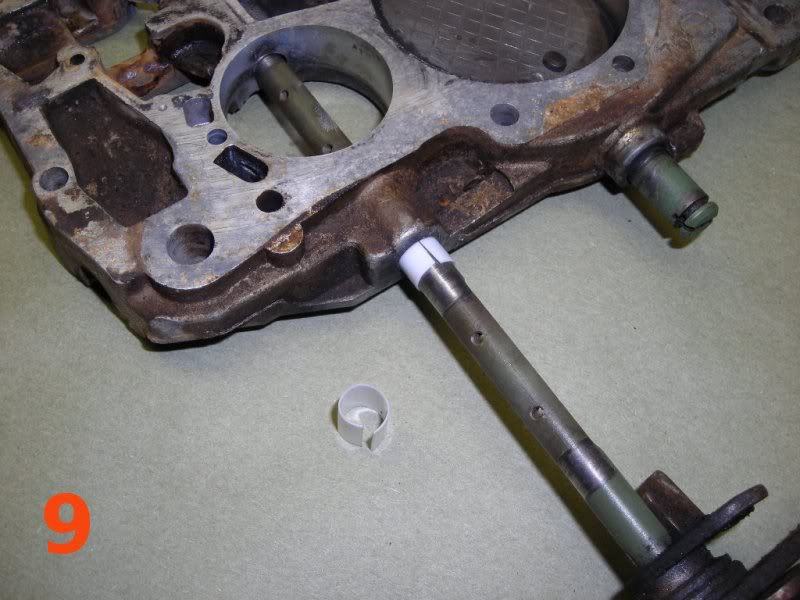
Photo #10 shows the passenger side bushing being installed. Carefully slide it in between the shaft and baseplate bore.
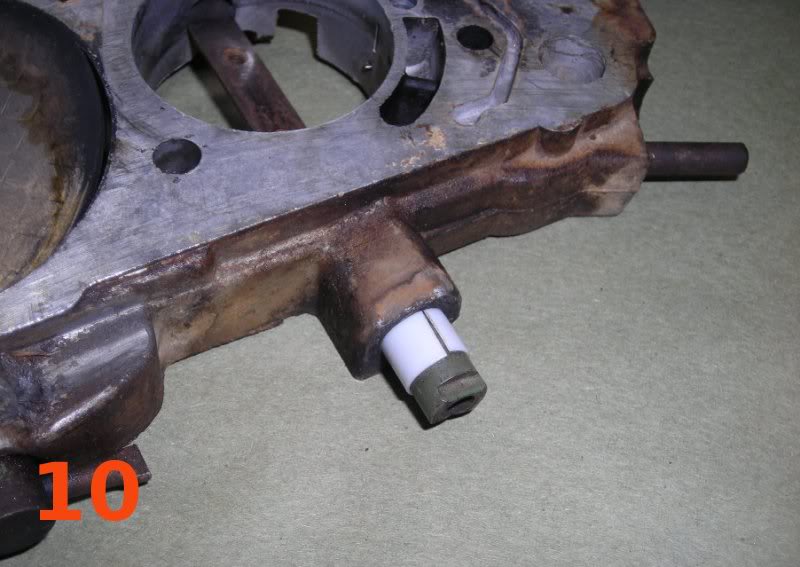
Photo #11 shows the bushing fully installed flush with the edge of the baseplate. The .015" thick teflon is a perfect fit in the factory stepped baseplate bore.
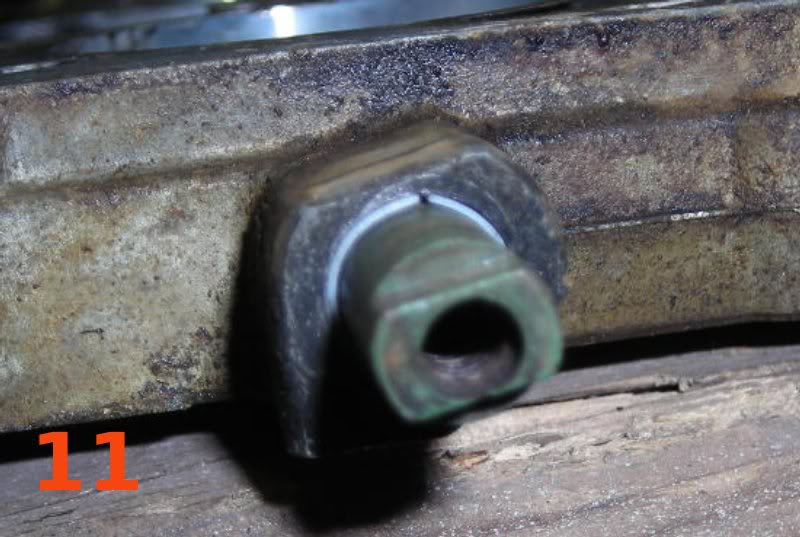
Photo #12 shows the throttle plates re-installed with the new 3-48 x 1/4" screws. Make sure the throttle plates are fitting properly in the bores before fully tightening the screws. Use Loctite on the threads and deform the protruding ends of the screws by "staking" them or squeezing them with vice grips. You don't want these screws backing out and going down inside your engine.
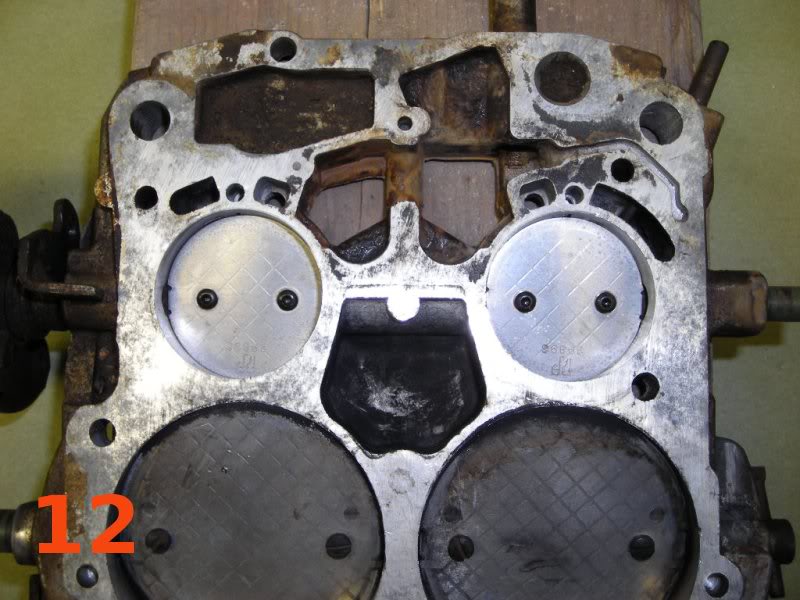
Photo #13 shows an "after" measurement taken in a similar manner as photo #4. The play is down to .004" and not even noticible when wiggling the throttle shaft lever.
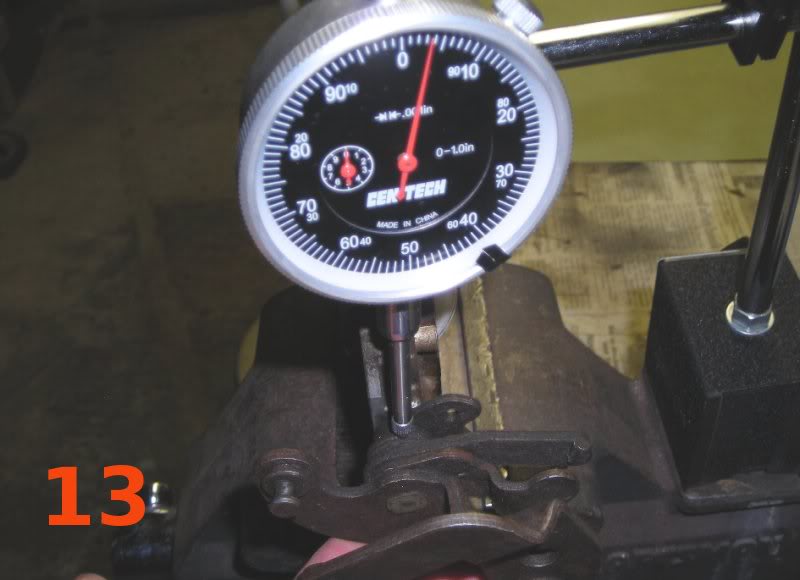
With the carb re-installed, the throttle now returns to the idle position normally. This particular carb only needed bushings on the primary shaft, but the secondary shaft can be done using the same procedure if necessary.
Return to Technical Information Page
Return to Ray's Chevy Restoration Site